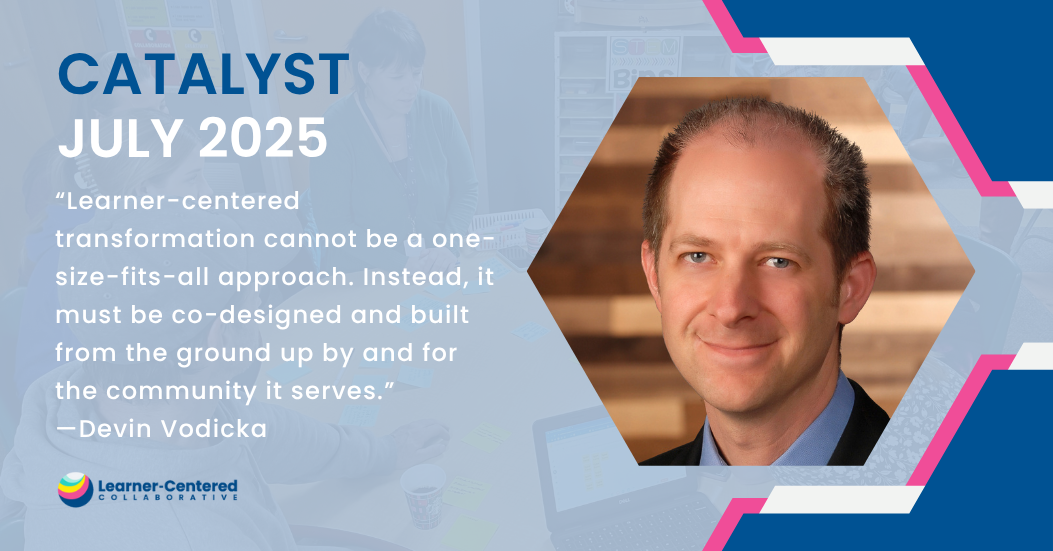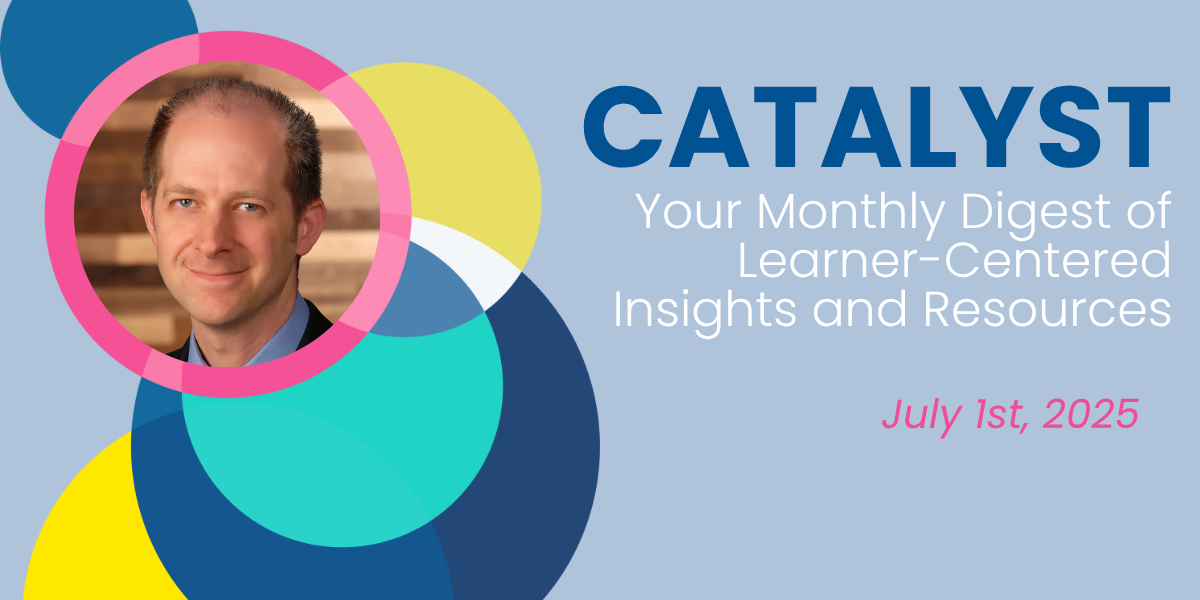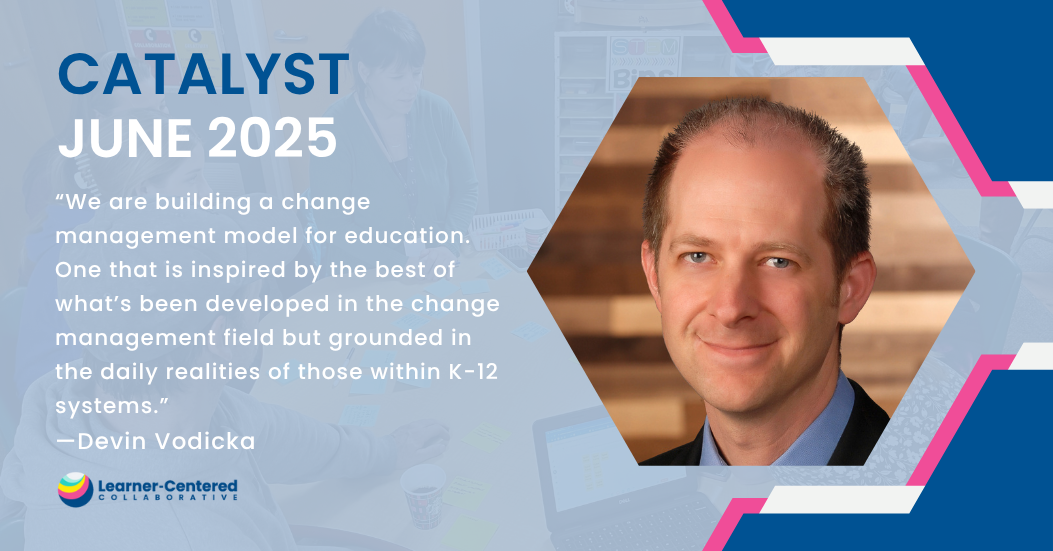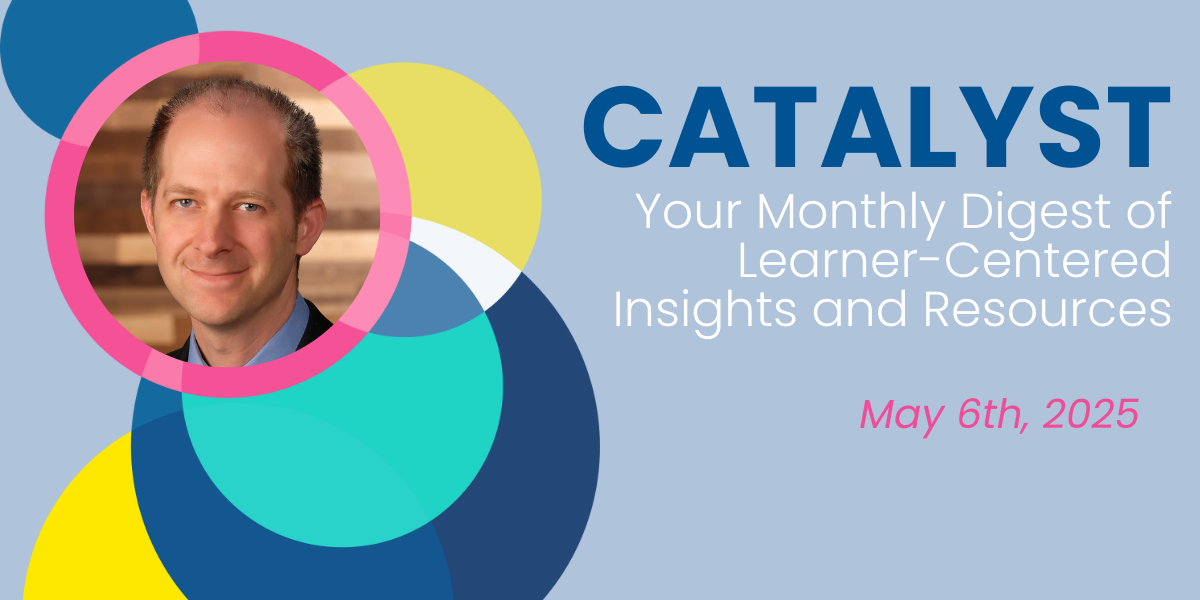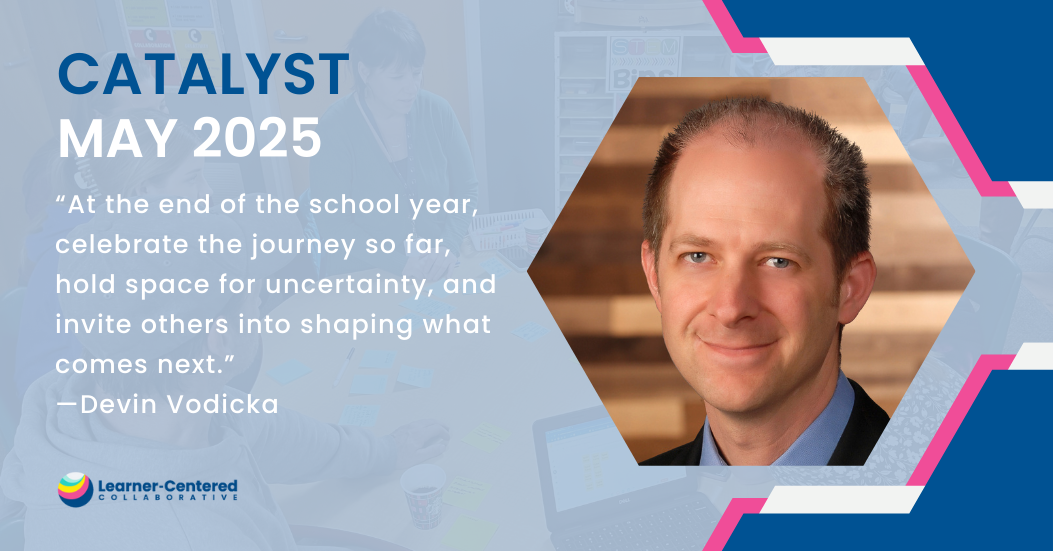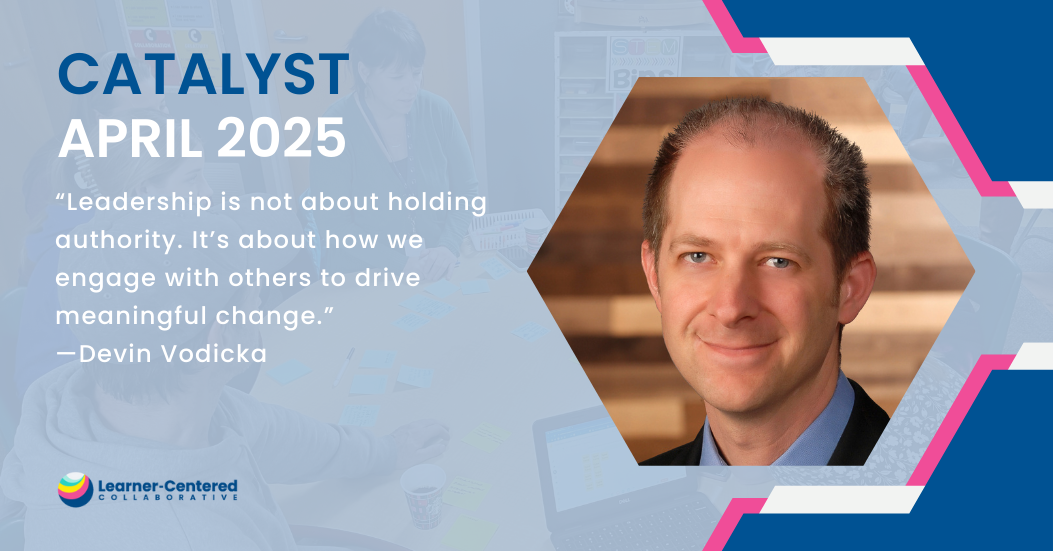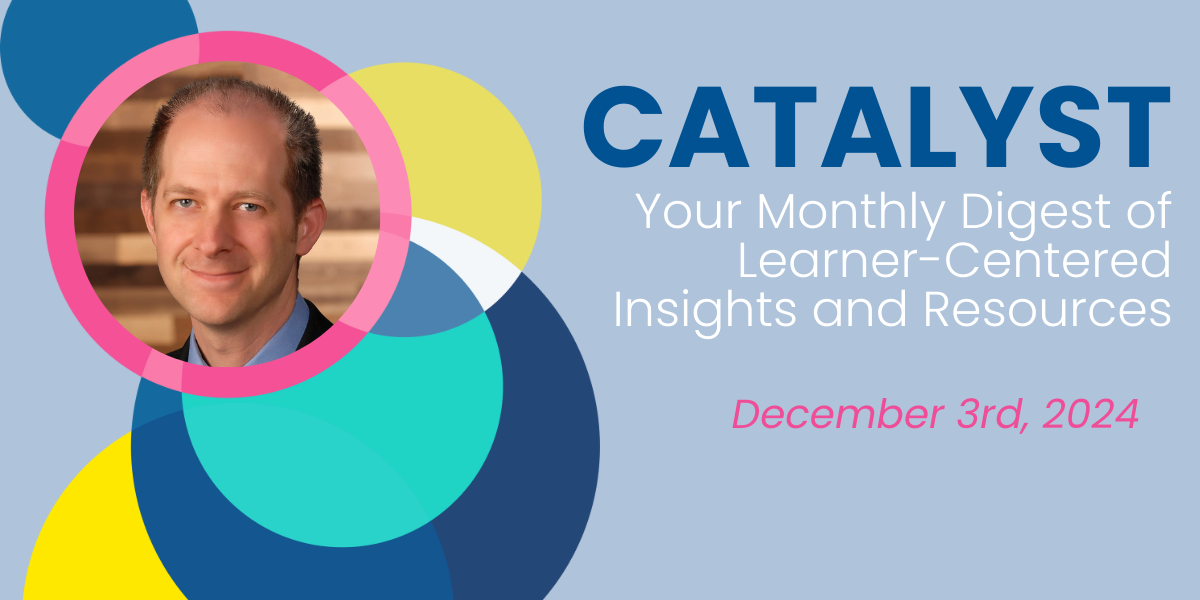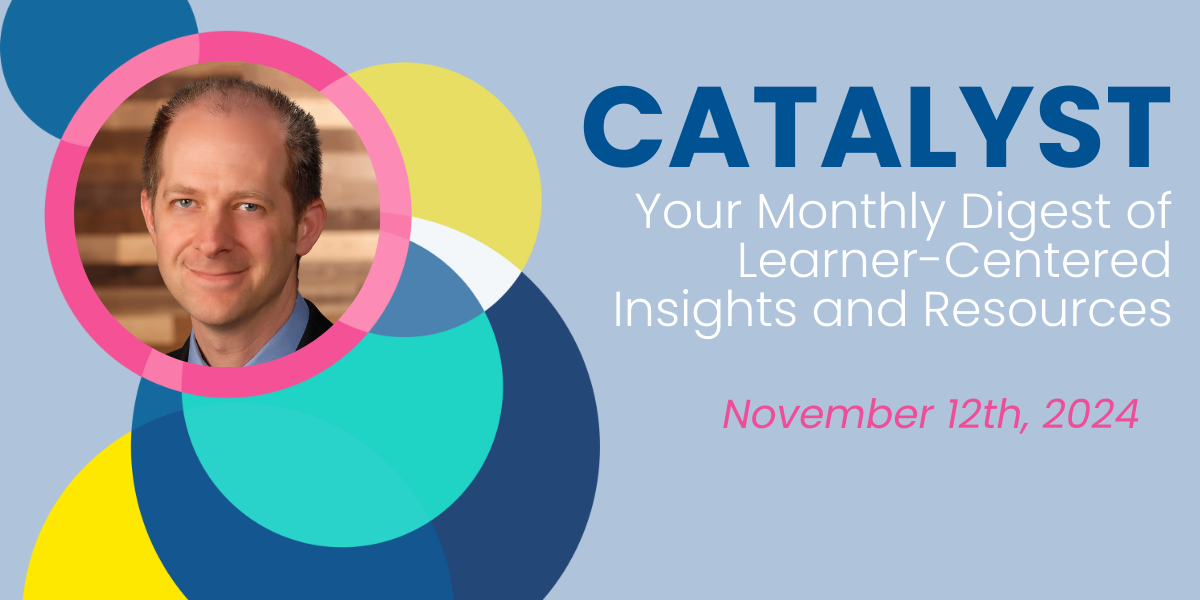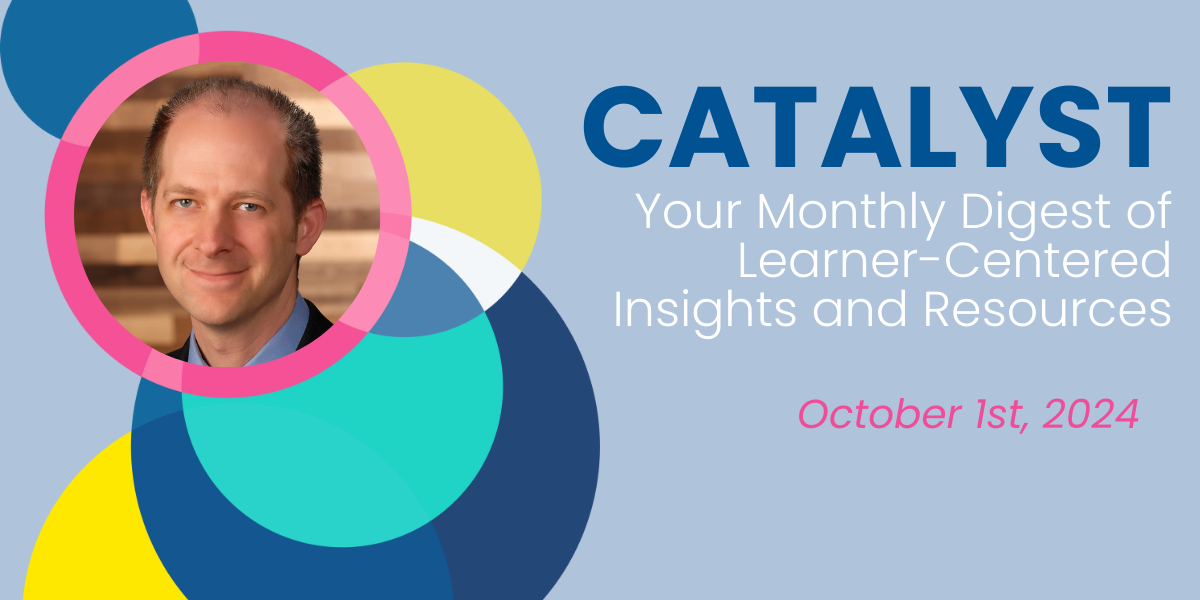Blog
What is the Purpose of School? A Call for Whole-Learner Outcomes.
What is the purpose of school? For the past four decades, the prevailing national answer—shaped largely by the 1983 report “A Nation at Risk” and documented by historian Patricia Graham—has been singular: Achievement. This focus helped usher in an era of standardization, compliance, and testing. It was designed to respond to global economic anxieties…
Blog
It’s Time for a Change Management Model Built for Learner-Centered Education
How often have we heard learners (adults included) ask, “Why do I need to know this?” It’s a question as old as formal education itself, and one we should never stop thoughtfully addressing. The likelihood of achieving our desired outcome diminishes when the “why” is unclear in any context. This is just as true…
Blog
Building Bridges Through Change: Leadership Lessons for Summer and Beyond
In education, the rhythm of the year is deeply cyclical. Each year forms a distinct cohort experience for learners, educators, and families alike. When the cohort concludes, there is a natural transition into the unknown. Students move to new grade levels, teachers adapt to new assignments or even new campuses, and leadership teams lay…
Blog
Purpose, Participation, and Feedback: What it Takes to be a Learner-Centered Leader
Too often, leadership is viewed as a position rather than a practice—something tied to a title rather than a way of engaging with others to drive meaningful change. In today’s rapidly shifting educational landscape, that perspective is proving insufficient. With rising rates of superintendent and principal turnover, teacher burnout, and declining enrollment, it’s clear…
Blog
Family Partnerships: A Key Strategy for Supporting Whole-Learner Outcomes
The Mindset That Makes Family Partnerships Possible If we view school as a one-dimensional institution with a narrow purpose—primarily focused on delivering content and measuring student proficiency aligned to narrow metrics—then the idea of partnering with families may seem like an unnecessary distraction. But if we believe learning happens within a larger ecosystem, where…
Blog
3 Leadership Building Blocks for Meaningful Change in Education
Schools have operated like factories for too long, with top-down control and rigid structures. Real change happens when leaders embrace relationships, shared purpose, and deep collaboration, creating schools that function as dynamic, interconnected communities. When educators work together, trust each other, and share responsibility, small actions can lead to big, lasting improvements. If we…
Blog
6 School Design Elements That Will Bring Your Learner-Centered Vision to Life
The school you walked into today does not have to be the school you walk into tomorrow. If we allow ourselves to believe this idea, so much becomes possible. We can begin imagining places of learning that adapt, evolve, and respond to the advancements of the modern world and the unique needs and aspirations…
Blog
The Listening Leader: Striking the Balance Between Receptive and Expressive Communication
There is power in sharing your transformational story as your school or district’s learner-centered journey unfolds, and I will always emphasize the importance of communication in fostering a learner-centered culture. However, it’s common to solely equate communication with expression—the outward sharing of messages and information. This limited view can create unexpected resistance as we…
Blog
Beyond the Classroom: Cultivating Local Partnerships to Generate Real-World Learning Opportunities
In our pursuit to create learner-centered educational ecosystems, out-of-school partnerships play a crucial role. Collaborations across various sectors not only break down barriers to access and opportunity but also infuse real-world learning into the everyday learning model. By fostering diverse partnerships, schools and districts can significantly enrich the learning landscape, offering students relevant and…
